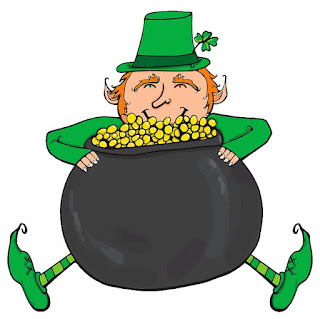Leprechauns and Assessments
As Saint Patrick’s Day approaches, I thought discussing the fairy tale of leprechauns and the value of real-life authentic assessments would be fun. Let’s start with leprechauns. Did you know these magical little people "existed" before St. Patrick's Day even came to be? Leprechauns were initially written about in 19th-century Irish fables where they are described as short men who just happened to be exceptional shoemakers. After making money, they were said to hide their coins in pots of gold at the end of rainbows. I can’t help but smile. Just an aside, although leprechauns have been spoken of in literature since the 1800s, they’ve only been associated with St. Patrick's Day since 1959, when Disney released a film called Darby O'Gill and the Little People.
While leprechauns dwell in the fairy world, authentic assessments keep our students grounded in reality. These assessments involve applying knowledge and skills in real-world situations, scenarios, or problems. An authentic assessment asks a student to perform a task rather than select a response. Ideally, the task is based in a real-life experience versus something contrived by the instructor. Some examples of authentic assessments follow, but many more can be found in Authentic Assessments from the University of Illinois Chicago.
- Oral interviews
- Writing samples
- Exhibitions
- Experiments
- Observation
- Producing a commercial
- Composing a song
- Creating a flyer, model, or proposal
- Debating
- Designing a product
Authentic assessments allow students to transfer learning and demonstrate mastery. These assessments can be done individually or collaboratively and often include reflection on the learning and how that learning connects to the student’s goals. Doing something that connects to the world outside of the classroom instills confidence in students and often produces artifacts that can be shared in resumes and interviews. Authentic assessments are challenging because they ask students to discover and create. Students find themselves in that uncomfortable stretch zone where things are ambiguous and require critical thinking and analysis. This zone is the place of learning! These types of assessments give students freedom and ownership of how much and to some extent, what they learn.
The existence of leprechauns is mythical and magical, but isn’t it also uplifting to think about these little men storing pots of gold from their hard work? Our students can store some pots of gold themselves from the products they produce in authentic assessments. Maybe this month, during the St. Patrick’s Day holiday, we can revise or create an assessment to make it more authentic. Consider what your students could produce to show employers or universities their mastery of knowledge. It’s a hopeful thought. Happy Saint Patrick’s Day.
References
Cavoto, E. (2024, January 25). What is St. Patrick’s Day? the history of the Irish-American Holiday. The Pioneer Woman. https://www.thepioneerwoman.com/holidays-celebrations/a35228560/st-patricks-day-history/
Costa, B. (2020, August 19). Alternative authentic assessment methods. Center for Excellence in Teaching and Learning. https://cetl.uconn.edu/resources/teaching-and-learning-assessment/teaching-and-learning-assessment-overview/assessment-design/alternative-authentic-assessment-methods/
Messier, N. (2022, April 15). Authentic Assessments. Center for the Advancement of Teaching Excellence | University of Illinois Chicago. https://teaching.uic.edu/cate-teaching-guides/assessment-grading-practices/authentic-assessments/#:~:text=Authentic%20assessments%20involve%20the%20application,create%20new%20knowledge%20and%20meaning.
Mulraney, F. (2023, March 10). What is the real meaning of Saint Patrick’s Day? IrishCentral. https://www.irishcentral.com/roots/history/real-meaning-saint-patricks-day

Comments
Post a Comment